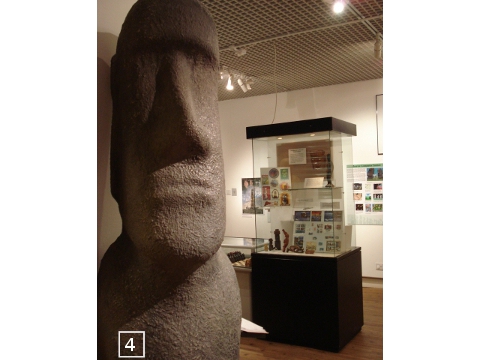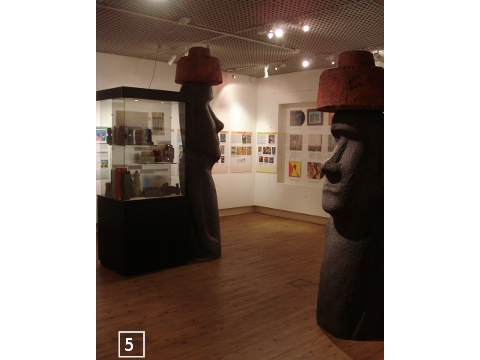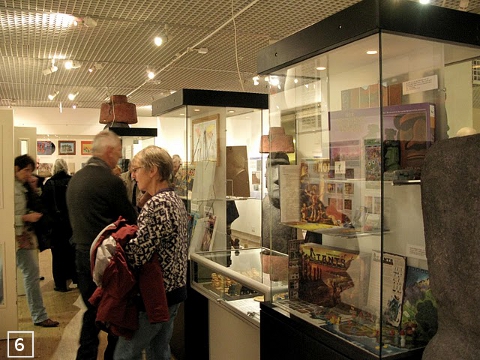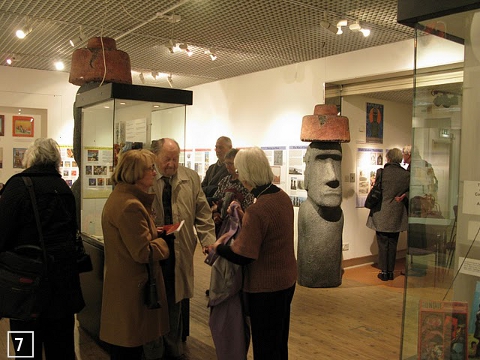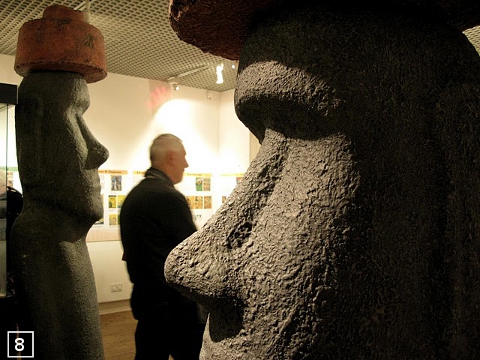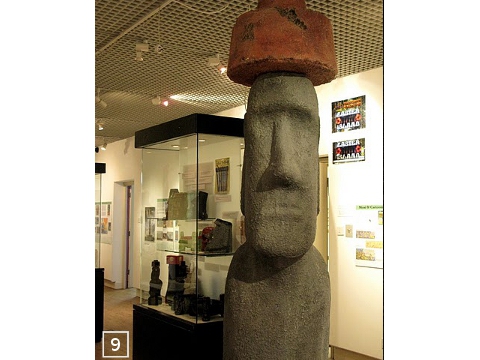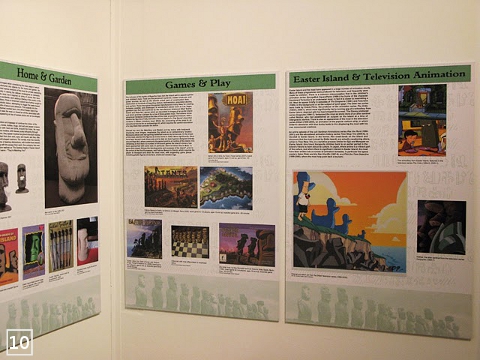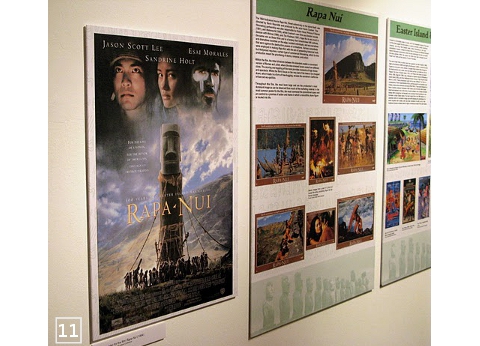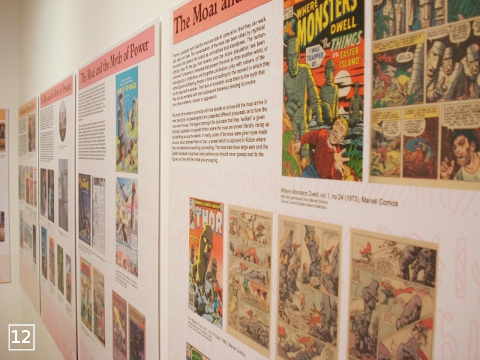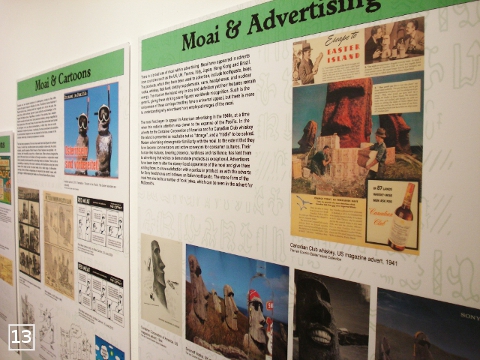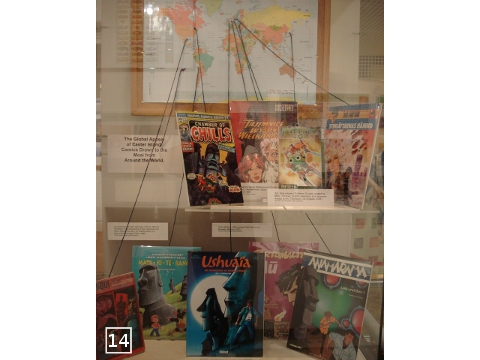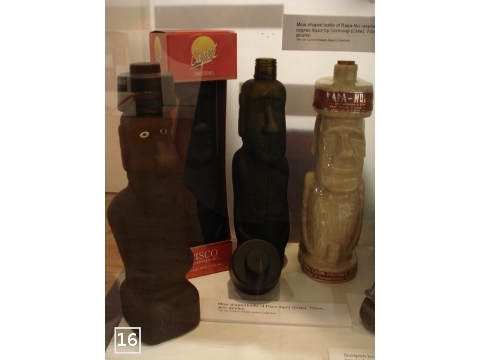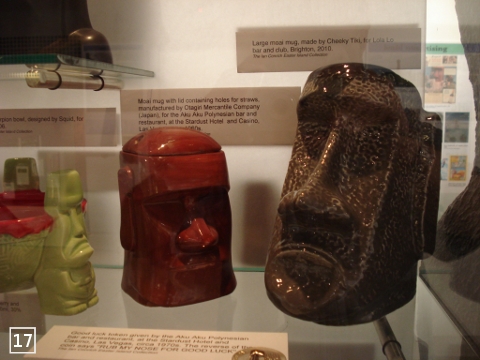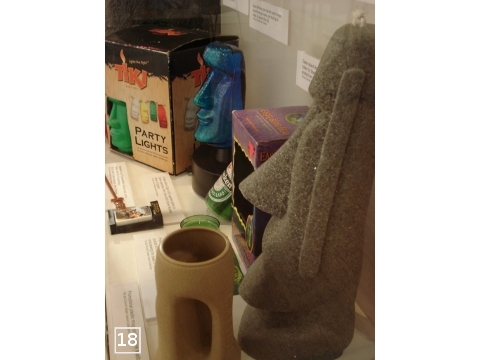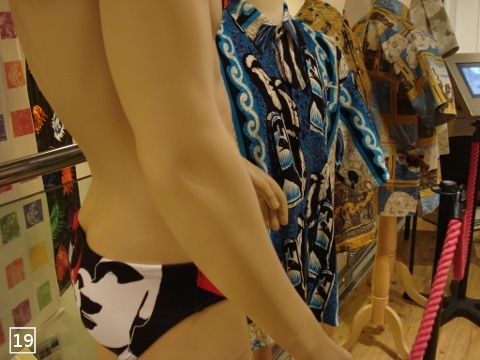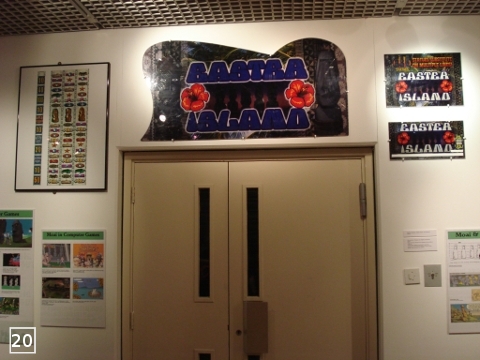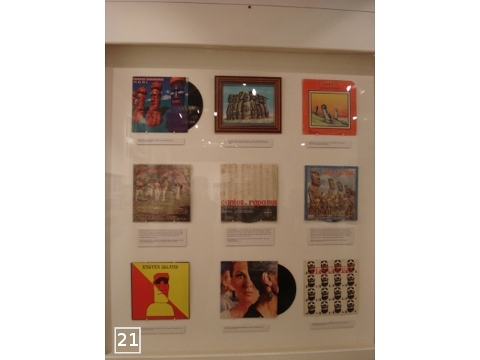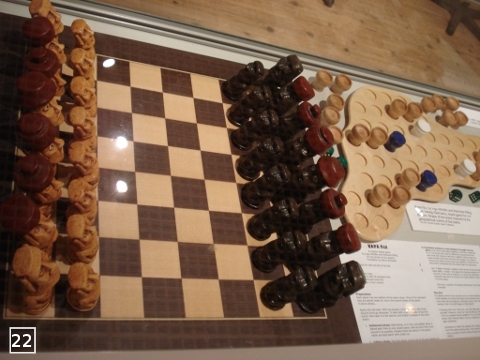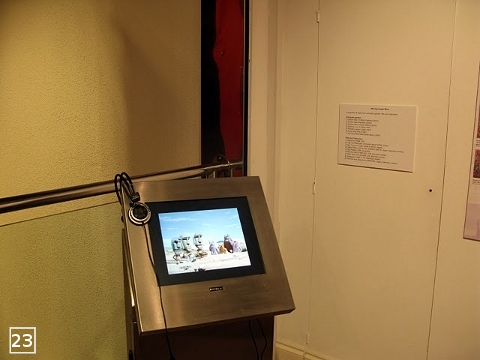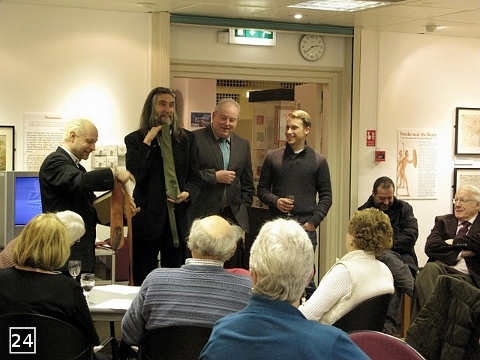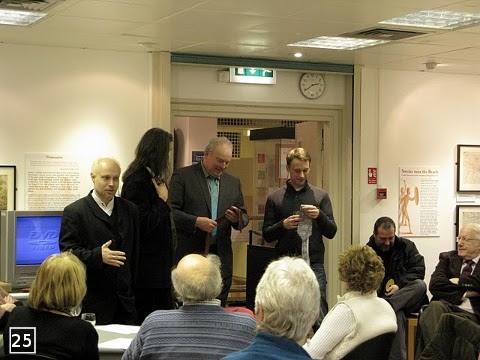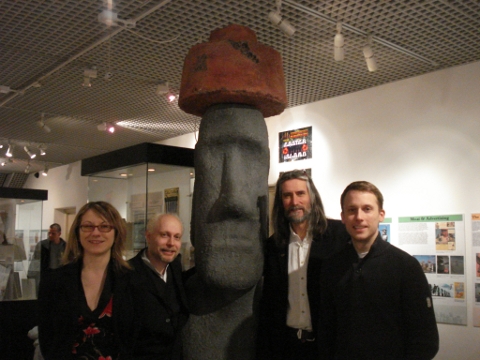Image captions
[2] The stone moai carving, Tutira, by Maori artist George Nuku, which sits proudly and permanently outside the Captain Cook Birthplace Museum. [4] One of the 8 moai carvings by Cheeky Tiki, which greets visitors to the exhibition. [6] Visitors to the exhibition on the first day. [10] A few of the nearly 40 panels on display. [14] One of the display cabinets foregrounds comic books from countries around the world. [15] A cabinet displaying popular moai items related to food and drink. [16] Liquor bottles in the shape of moai. [17] Ceramic moai mugs and bowls. [18] Moai candles, lights and partyware. [19] One section of the museum is devoted to the moai in fashion, with a display of Hawai'ian shirts and a pair of Italian swimming trunks. [20] Above the doors is a perspex promo sign from Las Vegas for the slot machine 'Easter island', The 2 perspex signs to the right are the front panels from the slot machine, and to the left, within a frame, are the 4 strips that would have been mounted on the spinning drums. [21] A selection of original vinyl album covers, depicting the moai. The 3 albums on the middle horizontal row are from the 1960s and are early records of music by the Easter Islanders. [22] A cabinet partly devoted to gaming, which features a chess set with moai pieces, and a game called 'Rapa Nui', with the shape of its board inspired by the outline of the island. [23] Extracts depicting the moai from television, computer games, and film fiction played on a museum monitor. [24] Curator Dr Ian Conrich (left) presenting special ties featuring the moai or the rongorongo glyphs to Dr Roy Smith (2nd left), Phil Philo ((2nd right) and Martyn Harris (right). The ties were presented at the opening of the exhibition and were given in recognition of each person's work and support. [26] At the exhibition's opening. Curator Dr Ian Conrich (2nd left), with Assistant Curators Dr Roy Smith and Martyn Harris (2nd right and right), and Associate Curator Teresa Jambur (left).




